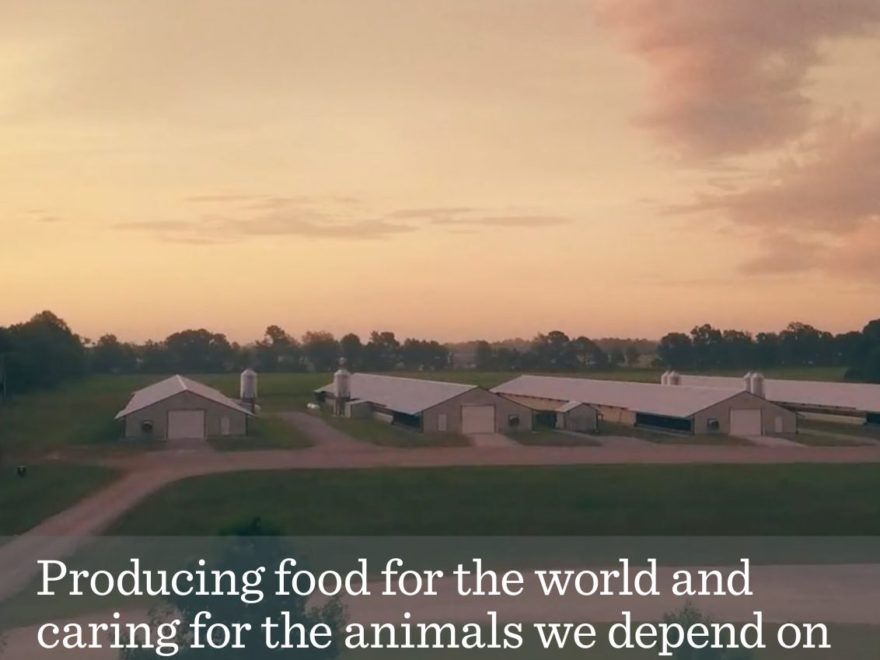A message from Tyson Foods Senior Director of Animal Welfare Karen Christensen, PhD
It has been nearly three years since I joined the Office of Animal Welfare as sr. director at Tyson Foods. The decision to go back to an industry position after a great experience in academia at the University of Arkansas was a daunting one, however, the opportunity to impact the welfare of the animals raised by this company was too important to turn down.
I believe my long career in the broiler industry prepared me for this position. I did not come from a farm background but knew early on I wanted to work in food animal production focusing on broilers. I have had many wonderful opportunities and many great mentors along the way.
I have worked in many capacities including service technician, broiler manager, live production manager and then a more technical role which included research and developing a program for animal welfare.
My production background is important because we must find ways to work within a very efficient system to produce food for the world, but we must also care for the planet and the animals we depend on while they are in our care. I always hoped to leave the industry in better shape than I found it, and I believe that can be best done working in the area of welfare.
What are the guiding principles for animal welfare at Tyson Foods?
Our vision for animal welfare at Tyson Foods is to be the leader in animal welfare through a commitment grounded in compassionate care based on sound science. In order to realize our vision, we have a dedicated and passionate team of people who work specifically in animal welfare and act as resources at each of our facilities.
Our international external advisory panel helps us with strategic planning and staying on the leading edge of welfare science. Our industry leading FarmCheck© programs verify that our animal welfare programs are carried out as designed throughout the supply chain.
We also transparently report on Key Welfare Indicators and 3rd party audit results in our annual sustainability report. And of course, our new broiler welfare research farm.
What makes the broiler research farm so unique?
The new Tyson Foods Broiler Welfare Research Farm is unlike any facility in the industry. It is a four-house broiler farm that allows us to evaluate and understand how welfare practices can impact broiler behavior in a commercial setting.
The farm has viewing rooms that allows researchers or customers to view the birds without being in their space. We see very different behaviors when the birds are not thinking about our presence.
The facility is also being used to test innovative technologies that have the potential to improve the way we assess and continuously improve welfare outcomes. We are currently collaborating on two projects as part of the McDonald’s SMART broiler project that was funded by McDonald’s and the Foundation for Food and Agricultural Research (FFAR), a part of the USDA.
I really believe new technologies will drive welfare improvements and better our understanding of how we can improve welfare.
What research projects are you focusing on now and how might that change in the future?
Currently, we are focusing on lighting and enrichments. Enrichments are things we place in the house to provide a more interesting or “enriched” environment for the chickens. We are looking at things like huts they can hide in and ramps they can climb, among others.
We are letting the birds decide which are more important to them. Our focus is on enrichments that the birds like, are safe for the grower, and are sustainable. We are currently looking at enrichments that are made of recycled materials, can be cleaned and are easy for the growers to set up.
We received a U.S. Poultry and Egg grant to study the impact of different lighting schemes and enrichments on welfare and leg health of broilers. This is a two-year project.
Our lighting work includes more work on our “choice” lighting scheme that provides the birds with bright light over the feeders and a gradient of light in the other areas of the house. This was developed through our preference testing approach to research where we include the birds in our research projects. Looking ahead, we will continue with top welfare priorities like density.
What are you hoping to learn from the birds?
We are using different preference testing methods and measuring the welfare outcomes to confirm that behaviour, performance, and physiological measurements of welfare all point to the best outcome for the bird. Chickens have a very different perception of the world, and it is important that we respect that when we are making decisions for them.
A good example is that they “see” light and respond to light very differently than we do, and that must be considered when we make decisions on lighting programs. What is comfortable for us may be very unpleasant or stressful for them.
We are also “asking” them about enrichments and what types of things are important to them throughout the time they are in our care. Interestingly, they tell us loud and clear what they want. We just have to know how to listen!


